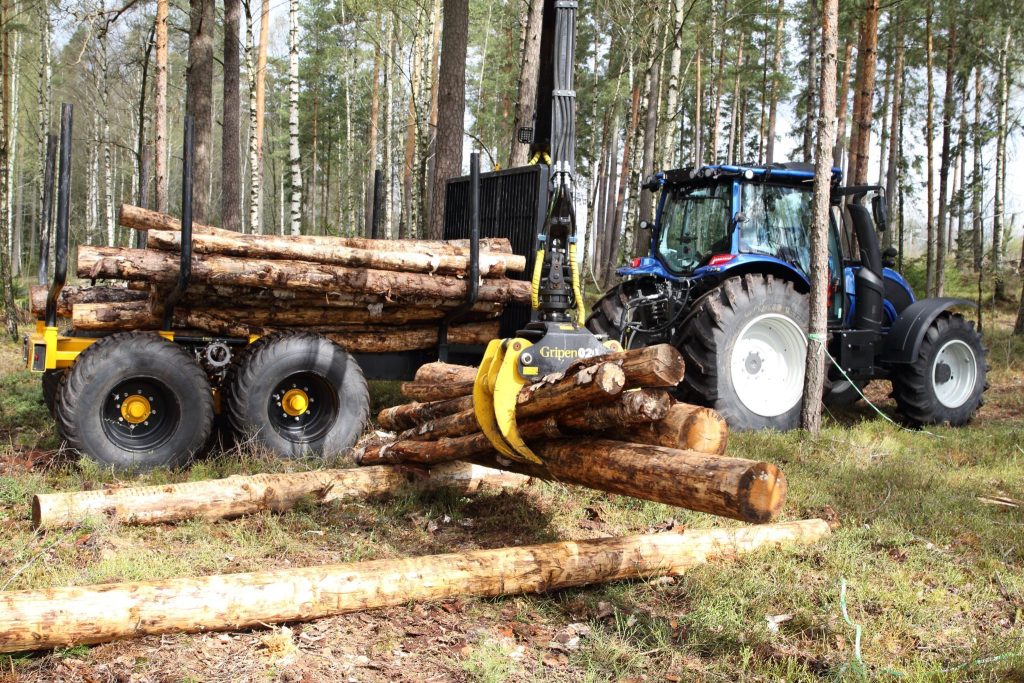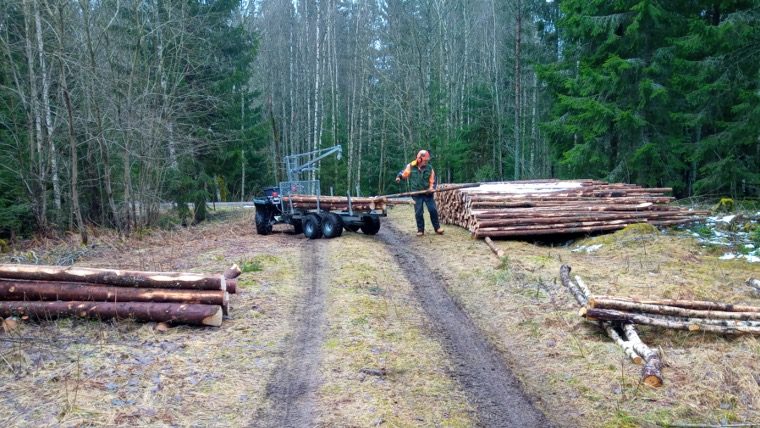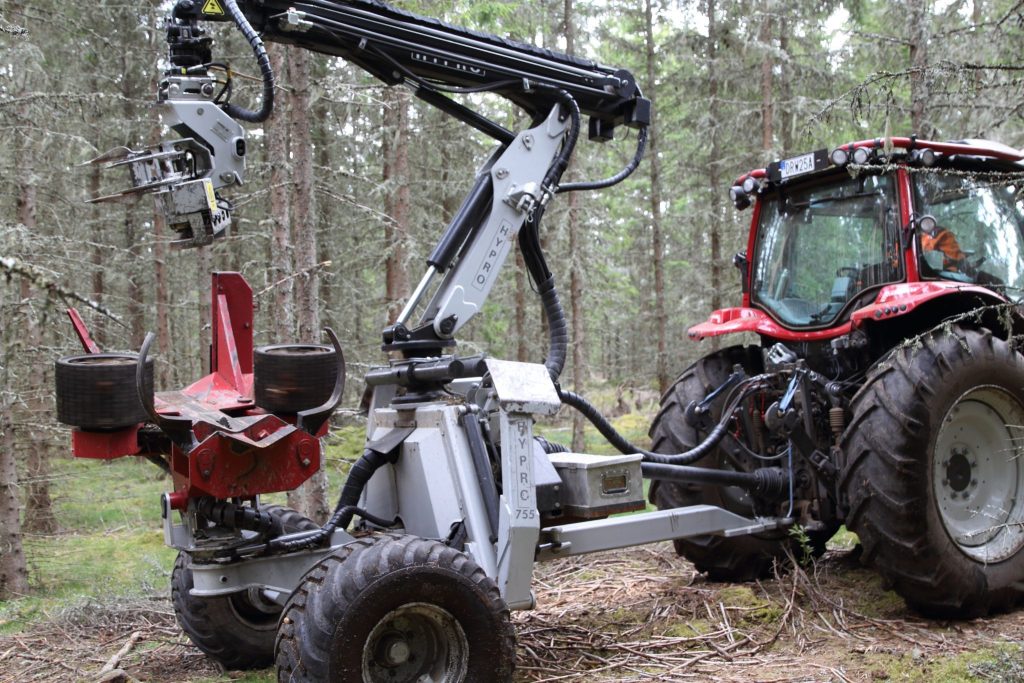Statistics show that timber, felled by Swedish forest owners, or by contractors hired by forest owners, and delivered to the industry is decreasing. Most of the timber delivered to the industry today, is felled by the forest industry themselves, forest owners’ associations, or contractors hired by those.
Are self-employed forest owners disappearing?
When I was a logger in the early 80’s forest owners, that commonly also were farmers, went to the forest each winter to cut timber. They felled it by chainsaw and forwarded it with their farm tractor and some kind of simple log trailer. They really liked cutting 4-meter lengths. I remember that specifically as I was working for a sawmill and was not allowed to cut 4-meter lengths. The Swedish bucking system with 10 lengths for sawlogs, from 3,1 meters to 5,5 meters in 0,3-meter steps seemed to be too complicated for the forest farmers as they mainly cut 4-meter logs. So, we had to stick to the other nine lengths.
Today it´s not so common that the forest owners do the felling in their forests. The active forest owners are getting older, and the new generation are not so interested in hard physical work. They quite often have “normal” jobs in the city and let someone else do the job in the forest for them.
On the other hand, the amount of equipment available for the self-employed forest owners is increasing. Log loaders, trailers, and even processors for tractors are available in a wide range today. It´s also becoming more and more common that forest owners but secondhand forest machines, both forwarders and harvesters. That means that the forest owners can avoid the hard manual work and continue to work in the forest despite rising age.
A matter of interest
It could be as simple as a lack of interest among the younger generation of forest owners. Today’s young people don´t want to work out in the woods, something that is also noticeable when it comes to recruiting young forest machine operators.
But could it be that simple? I have the feeling that there is something more to it. Above I mentioned that the farmers preferred to cut 4-meter lengths as it was easy. That was no problem as they still got the same price per cubic meter as if they had used more lengths. The sawmill compensated that by letting their own staff do the other lengths.
Today, bucking is more complicated than remembering the 10 sawlog lengths. Different sawmills require different lengths and dimensions of the timber according to what lumber they can sell. Therefore, the price lists have become more precise and complicated, and the loss if you buck wrongly can be big.
For old people, like me and many active forest owners, it could be difficult to adapt to the new price lists. And younger people are not interested, so … Many then conclude that it might be better to ask someone else to do the job. Someone who does it fulltime, like the industry’s contractors.
Does it matter?
That´s the next question: Does it matter who does the felling? What a self-employed forest owner with a chainsaw and a log loader does during the entire winter, a modern harvester team does within hours. So, what´s the point?
Most wood buyers offer to manage your forest, to decide when to make thinning or clear cut. All the forest owner has to do is to say “yes” and collect the money when the job is done. It´s very convenient. Especially for the wood buyers, and the industry.
Many forest owners of today prefer to have it this way. The problem is that it is the buyer’s and the industry’s way. There is a risk that you end up having no control over your forest, not knowing what you have or what the real value of your forest is. Keeping track on price lists, assortments, and the forest itself gives the forest owner an advantage. Knowing that a specific stand has a certain quality gives the forest owner a huge advantage in negotiations with wood buyers.
As for the job itself, you don´t have to hit the forest with a chainsaw or buy a log loader. A private forest owner can hire a professional harvester team who knows how to buck and to get the most possible value out of each tree. You don´t have to use the industry’s contractors.
Knowledge is power
To know your forest should be a matter of course for every forest owner. There are high values in the forest and if you own one you should control it. If it was money, you would for sure ensure that you had control over it.
The best way to control your forest is to manage it yourself. To spend time in the forest over a long time, to see how the forest develop over time and how it reacts to different actions, is the best way of learning. The knowledge you get from this is irreplaceable and gives you power in negotiations with wood buyers.
If this knowledge is lost, the power and the control over the forest is lost to foresters and advisers. As most foresters and advisers in Sweden are employed by the forest industry, mainly the pulp industry, this means that the control of the forests is transferred to the industry.
So, even if you don´t want to learn how to sharpen a chainsaw chain, you simply must learn about forest management and about your own forest. The industry, here in Sweden anyway, has enough power already.
Photos: Per Jonsson














